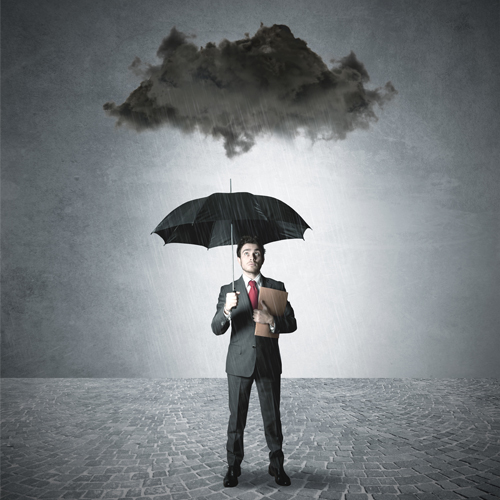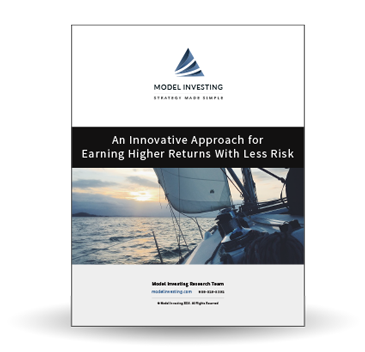
In a previous article, we took a look at the business cycle to understand how the natural ebb and flow of our economy impacts things like asset prices, wages and interest rates. In this article, we’ll dive deeper into what exactly causes those dreaded periods we call recessions.
Anyone who’s lived through more than one recession knows that they’re nebulous by nature; each one has its own causes, characteristics and effects. In order to better understand the root causes of recessions, we need to understand what attributes they all share.
So what is the common denominator across all recessions? What’s the one constant that’s always in play, regardless of the specific trigger that initiated the slowdown?
It’s All About Spending
This may seem a little counterintuitive at first, but the heartbeat of an economy is spending. The reason everything boils down to spending is because of the relationship between spending and income. Every dollar that is spent subsequently becomes income for someone else.
Think about it. If people were to stop spending money with the company you work for, your company wouldn’t have money to spend on you, in the form of wages and benefits. If you don’t receive income, it means you can’t spend on things such as rent or a mortgage. And if you can’t pay rent or make your mortgage payment, it means either your landlord or your lender is not receiving income, and their capacity to spend is diminished.
When spending slows, it triggers a feedback loop that causes more cuts in spending, resulting in a vicious circle. This is the primary characteristic of recessions, and it exists regardless of what the actual catalyst was that initiated the slowdown.
In our search to identify the exact causes of recessions, we must attempt to understand what causes this reduction in spending. If we can pinpoint the type of environments or catalysts that trigger consumers to hold on to their cash, we’ll be able to anticipate the next recession with much greater accuracy.
So what types of events and situations elicit cutbacks in spending?
Economists have broken these causes into three main groups: demand and supply shocks, asset bubbles, and oddly enough – long periods of economic stability.
Demand and Supply Shocks
For the most part, both consumers and business are good at anticipating how economic conditions will evolve. But every once in a while, something totally unexpected happens that forces these two groups to change their spending patterns. These are known as economic “shocks.”
Shocks can occur on both the demand and supply side of our economy. A good example of a demand shock is a sharp rise in interest rates. In an attempt to slow an overheating economy, as well as prevent excessive inflation, the Federal Reserve will often raise short-term interest rates.
When they do this, it causes interest rates on most variable-rate debt (credit cards, home equity lines of credit, adjustable rate mortgages etc.) to rise. This forces consumers and business to spend more on existing debt, leaving them with less cash to spend elsewhere. When the Federal Reserve raises interest rates too quickly, it can severely reduce the demand for goods and services because more resources must now be redirected toward servicing debt.
Whereas demand shocks create a sharp reduction in the demand for goods and services, supply shocks disrupt the availability of a particular good or service. We commonly see this with oil.
When the supply of oil comes under pressure, it causes the price of oil to skyrocket. Since just about every product we consume utilizes oil in the production process, and a big portion of consumer and business expenses are fuel related, a rise in the price of oil forces cutbacks in spending elsewhere.
Big oil price increases are associated with events such as the 1973-74 embargo by the Organization of Arab Petroleum Exporting Countries, the Iranian Revolution in 1978, the Iran-Iraq War in 1980, and the First Persian Golf War in 1990. Each of these episodes was followed by a global economic recession. In fact, here in the States, each of the last five recessions was preceded by a sharp rise in oil prices.
As you can see, economic shocks come from various sources, but the effect is usually the same – a sharp and immediate reduction in spending that throws the economy into recession.
Asset Bubbles
Another trigger that can cause a sharp reduction in spending is the popping of asset bubbles. This is because when asset prices deflate quickly, it causes a tremendous amount of wealth to evaporate. Consumers and business who have seen their net worth fall dramatically will naturally pull back on spending in an attempt to shore up their finances.
One of the most clear-cut examples of an asset bubble induced recession was the dot-com collapse in the early 2000s. During the late 1990’s, internet stocks were in vogue. The tremendous demand from investors caused share prices for many companies to skyrocket. This created an immense amount of wealth, which helped facilitate spending in other areas of the economy.
However, once the prices of overvalued internet stocks began to decline, this dynamic reversed. Investors lost so much money as the dot-com bubble collapsed that they were forced to cut back on spending in the real economy. This created a chain reaction, and threw the economy into recession in early 2001.
While most people immediately think of the stock market when they hear the term asset bubble, we’ve experienced bubbles in other asset classes as well. One of the most severe recessions we’ve ever witnessed occurred from 2007 – 2009, as a result of the collapse in home prices.
Shortly after the economy recovered from the dot-com collapse, extremely low interest rates and faulty lending standards contributed to a massive rise in home values. From 2002 – 2006, home prices across the country rose at double digit rates, eventually peaking in late-2006.
During that time, the economy boomed as much of the wealth that was created in homes was extracted through sales or cash-out refinances. When the real estate bubble finally began to deflate, it wiped out trillions of dollars’ worth of value from the economy. This left many consumers and businesses insolvent, and as a result, spending plummeted.
We will no doubt experience many more asset bubbles down the road, so make sure to keep your eyes open for these unruly events.
Long Periods of Economic Stability
Most economists will point to the two situations outlined above as the key causes of recessions, but another famous economist, Hyman Minsky, proposed something altogether different.
In 1976, Minsky wrote a paper called, “A Theory of Systemic Fragility.” In it, he expressed the view that economic crises “were neither accidents nor the result of policy errors,” but rather “the result of the normal functioning of our particular economy.”
In other words, Minsky believed that stable economies breed optimism, which in turn leads to excessive risk-taking, which inevitably leads to instability. It may be some type of shock that ultimately causes the house of cards to collapse, but the root of the instability is derived from, in a sense … complacency.
When times are good, both consumers and business become increasingly comfortable taking on debt in pursuit of profit. As this process continues, the absence of any serious financial difficulties causes optimistic bankers to continue extending credit to borrowers who stand little chance of repaying their debts. Eventually, a tipping point is reached, and that’s when the next crisis begins.
Over the years, Minsky has been popularized through the use of the term “Minsky moment,” which refers to the sudden collapse of asset values as part of the credit or business cycle. Without question, you will hear his name come up again when the next crisis is upon us.
Final Thoughts
At this point, you should have a good understanding of primary causes of recessions, but that doesn’t necessarily mean the next one will be easy to spot. As mentioned earlier, every recession is unique, and there are often multiple factors that converge to send the economy into recession.
The last recession that we experienced occurred from December, 2007 – June, 2009. The subsequent economic expansion (that we’re now enjoying) has become the longest on record. This doesn’t necessarily mean that the next recession is around the corner, but it’s a sign that we need to pay close attention to the risks that lay ahead.
When the next economic downturn is upon us, the sooner we can recognize it, the better our chances for sidestepping its damage. When you consider that asset values frequently get cut in half during these unruly periods, you realize why it’s so important to understand both their causes and effects.
Posted in: Debt Economy Interest Rates Investment Insights Recession Stocks


